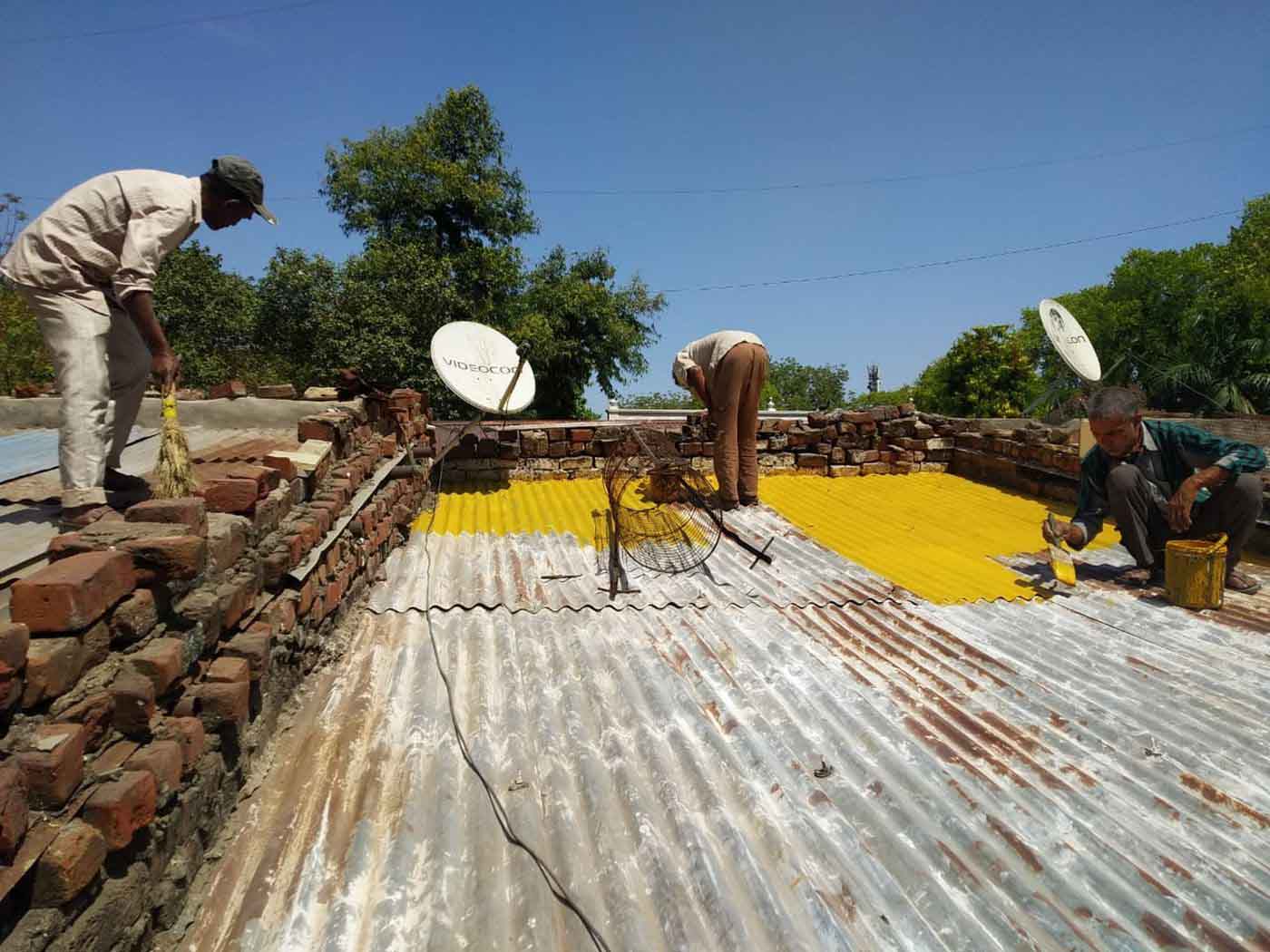By Priya Dutta and Dileep Mavalankar, Indian Institute of Public Health Gandhinagar, and Prima Madan, Natural Resources Defense Council in Ahmedabad, India
Community outreach and a roofing program have saved thousands of lives in an Indian initiative.
It’s been just twelve years since Ahmedabad, a major city in western India, experienced a devastating heatwave. In one lethal week in May 2010, temperatures surpassed 48 degrees Celsius and 800 people died. Authorities advised people to stay indoors during the hottest part of the day as hospitals were overloaded. Bats and birds dropped dead from the trees they roosted in.
Ahmedabad has always experienced hot weather, but the 2010 conditions were exacerbated by climate change and a slow-moving cyclone.
Since that tragic week, the Ahmedabad Municipal Corporation partnered with the India Institute of Public Health- Gandhinagar (IIPH-G) and the US Natural Resources Defense Council (NRDC) to develop India’s first heat action plan. An estimated 1,190 deaths have been avoided each year since its launch in 2013. Heat action plans have since expanded to over 23 states and more than 100 cities and districts through the National Disaster Management Authority (NDMA).
The heat action plan builds resilience to extreme heat events through public awareness and community outreach; interagency coordination to enable an early warning system; capacity building among health care professionals; and promoting adaptive measures to reduce heat exposure.
People living in slums and low-income communities are particularly vulnerable — many homes are far from optimal, with few options for cooling and highly compromised living conditions. An important component of the heat action plan includes so-called ‘cool roofs’. These are coatings or materials that reflect sunlight and absorb less heat. Depending on the setting, cool roofs can help keep indoor temperatures lower by 2 to 5°C compared with traditional roofs that are often made from corrugated tin or sheets of asbestos.
Building on the back of a successful pilot in 2017, in 2020, Ahmedabad announced a cool roofs program for more than 15,000 slum roofs and 1,000 government buildings as part of its heat action plan. The focus of the larger roll-out is on slum households and local government buildings.
The pilot in 2017 focused on community awareness through pamphlets, hoardings and communication materials to increase local knowledge on what cool roofs are, how they can help keep indoor temperatures lower, and what materials can be used to convert to a cool roof. Ahmedabad’s initiative builds on extensive work by Mahila Housing Trust, which has installed over 100 cool roofs in low income communities in Ahmedabad, using solar reflective paint and a technology called ModRoof — a locally made material using coconut husk and paper waste — an eco-friendly, cooling alternative.
Cool roofs are popping up in other parts of the country. In 2020, NRDC and Mahila Housing Trust painted the roofs of selected slum households with solar reflective paint in four cities, Jodhpur, Bhopal, Surat, and Ahmedabad. The households were selected based on the household’s electricity usage, type of roof (tin or cement), exposure to sunlight, and the number of household members sharing the space. The program across the four cities painted more than 460 roofs and provided information on solar reflective paint to 13,587 households and 67,935 individuals.
With the objective of scaling cool roofs across India, the National Disaster Management Authority, working with NRDC and IIPH-G released the Heat Wave 2021: National Cool Roofs Challenge, inviting cities with heat action plans to declare targets and implement cool roofs as part of their plans in 2021. The devastating COVID-19 second wave, resulted in reduced uptake of the challenge in 2021. An extension into the coming years is now being considered.
Extreme heat is not merely an inconvenience; it can be deadly. In India, nearly half a billion people live in rapidly urbanising cities, with skyrocketing development that converts open space into paved, heat-trapping roofs and roads. Fuelled by climate change, many Indian states will experience ever-more deadly heatwaves. Initiatives such as heat action plans and community outreach on reducing exposure to extreme heat have proven to be effective in enhancing heat resilience. Cool roofs and other adaptations to building design can provide simple and effective solutions to increasing heat in urban areas.
Priya Dutta is an environmental health consultant at the Indian Institute of Public Health, Gandhinagar and has been instrumental in developing the scientific evidence-based case for the Heat Action Plan and Ahmedabad Air Information and Response (AIR) Plan.
Prima Madan is a Lead Consultant at Natural Resources Defense Council India Program, working on initiatives on promoting sustainable cooling and energy efficient solutions at national and sub-national level in India.
Dileep Mavalankar is the Director of the Indian Institute of Public Health Gandhinagar – a joint initiative of Public Health Foundation of India and Gujarat State Government. He is also a key partner in the Ahmedabad Climate, Heat Action Group and Ahmedabad AIR group.
The authors have no conflict to declare.
Originally published under Creative Commons by 360info™.










